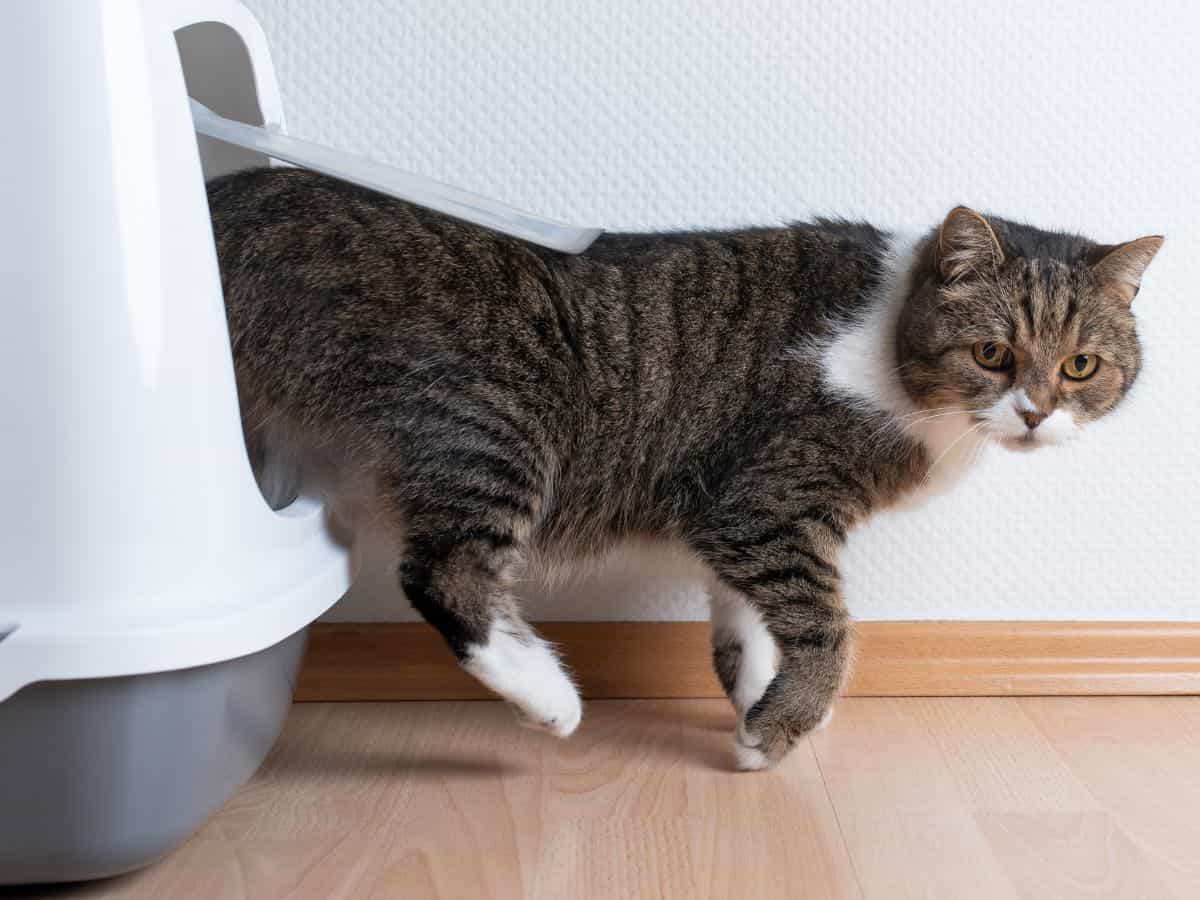Choosing the right litter box is an essential aspect of cat care that impacts not only the wellbeing of your cat but also the cleanliness and odor control of your home. Yet picking out a litter box is often done without much thought. Although many cats will adapt to the litter box they are given, choosing one that suits their specific needs can significantly reduce the likelihood of problems related to them not wanting to use their box.
Here are some general guidelines to consider when selecting litter boxes that meet your cat’s needs and the constraints of your house.
Size of the litter box
Cats prefer a litter box that allows them to move freely and turn around. The general rule is that the box should be at least as long as your cat from nose to tail and wide enough for them to squat comfortably. Your cat should be able to enter the box and have enough space to turn around.
Cats like to cover their feces. To do so, your cat will turn around and use their front paws to dig in the litter to scoop it over their poop. If your cat doesn’t have the room to do this important last step, they might look for a better place, like pooping on towels left on the bathroom floor that can then be dragged over the feces.
If you notice your cat scraping the walls or floor near their litter boxes after they have used it, the box is not large enough.

Height of the entrance to the litter box
If you have kittens or a cat with mobility issues, make sure the entrance to the litter box is low. If your cat is not able to step over the lip in order to enter the box, they might look for a more convenient place to do their business.

Height of the back of the litter box
Explore Cats is a participant in the Amazon Services LLC Associates Program, an affiliate advertising program designed to provide a means for sites to earn advertising fees by advertising and linking to amazon.com.
One of my cats is tall and lanky. She is a big cat. She also, unlike most females cats, doesn’t squat when she pees. Instead, she likes to pee standing straight up. I went through a few litter boxes trying to find the right one that met her way of using the litter boxes. With lidless litter boxes, her urine would end up on the wall behind the box before dribbling down and underneath the box. I then tried a cover litter box but my cat’s pee would end up seeping through the gap between the top and bottom parts of the box.

Finally, I discovered high-backed litter boxes. This type of litter box comes in one solid plastic part, so there are no crevices for urine to seep into. There are two types of high-backed litter boxes that have worked well with my large, high spraying cat: the Richell USA – PAW TRAX High Wall Cat Litter Box and the Frisco Leaf High-Sided Cat Litter Box. Learn more about these types of litter box: High Backed Litter Boxes for Those High Spraying Cats in Your Life.
Lid or no lid with a litter box
Whether the litter box is enclosed depends on the cat. Some cats will feel claustophobic using a litter box that has a lid. Using the bathroom is a vulnerable behavior for a cat. Many cats like to know that there are quick escape options while they use the litter box. It’s one reason why some cats get the roomies after eliminating.
Other cats prefer the privacy of an enclosed box, particularly if your home’s limits require that the litter box be placed in a high traffic area. A litter box with a lid provides a secluded space that will allow some cats to feel secure and undisturbed.

Litter box placement
Once you have found the right type and size of litter boxes for your cat, make sure the placement of these boxes is optimal.
Location: Choose a quiet, accessible location where your cat feels safe. Avoid placing the litter box near the cat’s food and water bowls, as cats naturally avoid eliminating near their eating areas.
Privacy: While ensuring privacy, the location should not be too isolated, as cats might not use a box that is difficult to access or feels unsafe.
Multiple Floors: If you live in a multi-story home, your should to have a litter box on each level to accommodate your cat’s needs. If litter boxes are too far away or hard to get to, your cat may start eliminating outside of their litter boxes.
Keep the litter boxes clean
Regular cleaning is important for regular litter box use. Cats will avoid using a litter box that is too dirty. Scoop the box daily and change the litter as recommended by the litter type. Wash the box with mild soap and water during litter changes to prevent odor and bacteria buildup.
Offering the optimal litter box reduces odor and mess in your home
Selecting the right litter box is a balance between your cat’s natural behaviors and preferences and your own lifestyle and home environment. By considering the size, type, placement, and maintenance of the litter box, along with the type of litter and your cat’s health, you can create a comfortable and hygienic environment for your cat and maintain a clean and odor-free home. Remember, the best litter box is the one that your cat uses consistently and comfortably.







